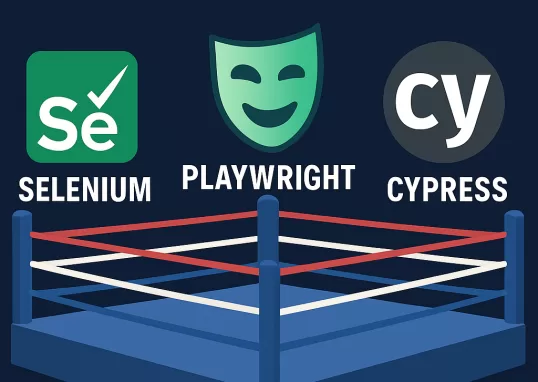
With the growing adoption of agile methodologies, software development is no longer a linear process filled with isolated stages and endless documentation. The new norm is different: fast deliveries, short cycles, and constant feedback.
But with all this speed, one inevitable question arises: where does QA fit in?
A lot of people still see quality as a final step, just a checklist before deployment. But in agile teams, QA’s role goes far beyond that. It’s present from the very beginning, ensuring that quality is built into every step of the process, not just verified at the end.
From Traditional to Agile: How the QA Role Evolved

In the well-known waterfall model, QA would only come into play once the product was “done.” It was like testing a cake after baking, if something went wrong, all you could do was throw it out and start again.
Agile methodologies flipped that script. QA joins the kitchen from the start, collaborating on the user experience, participating in daily meetings, and following each sprint closely.
And that action makes a difference. According to the State of Agile Testing report (2023), 78% of teams that involve QA from the start see shorter delivery cycles and less rework.
What’s Expected from QA in an Agile Team?
Being present in team meetings (like planning and review) is just the beginning. QA’s role goes further, they help define acceptance criteria, suggest improvements, and even write automated tests before a single line of code is written.
On top of that, QA needs to keep communication flowing, with developers, product owners, and sometimes even users. Testing has stopped being a solo task; it’s now a collaborative mindset.
Now think about the daily routine: short cycles, constant changes, high test coverage needs, and limited time. That’s where tools like TestBooster come in, helping QA professionals optimize their effort and stay productive.
Instead of spending hours running manual tests or waiting on a slow CI pipeline, QA can rely on TestBooster’s smart automation to speed things up, without sacrificing coverage confidence.
The Real Challenges of Agile QA
Let’s be real: working in agile environments isn’t all smooth sailing. It demands flexibility and quick thinking from QA. Some of the biggest challenges include:
- Short time to test before each delivery.
- Constantly shifting priorities and features.
- Lack of visibility into the full impact of changes.
- Pressure to deploy fast without compromising quality.
It can be tough, and that’s exactly why QA needs to lean on smart practices and tools to keep things balanced.
Automation is a key part of that. But it’s not just about that. What matters is having a strategy that combines efficient test coverage with intelligent execution. That’s exactly what TestBooster is built for.
The tool understands the context of the application and works independently of code, making it more resilient to updates and changes. That means faster, safer decisions within the sprint.
How QA Can Be an Ally to Agility

Being agile’s ally doesn’t mean saying “yes” to everything. In fact, when it comes to quality, that’s the last thing you should do. It’s about knowing when to say “not yet”, with solid technical reasoning. It’s about identifying risks before they turn into bugs.
The QA professionals who stand out in agile teams are those who:
- Build tests collaboratively with the team.
- Automate with strategy and knowledge.
- Actively participate in key decisions.
- Use metrics to guide quality.
And of course, they use tools that support agility. TestBooster was designed exactly for that: helping QA keep up with the pace while maintaining full confidence in their testing process.
QA isn’t just about Quality, it’s about delivering value
At the end of the day, QA’s job is to make sure what reaches the customer delivers real value, works as intended, and solves the right problem. That’s a lot more than just “bug hunting.”
QA needs to be strategic. It prevents issues, speeds up delivery, and gives the team the confidence to innovate. That’s why it can’t be left behind.
If you’re working with QA in an agile team and constantly feel like you’re playing catch-up, maybe it’s time for a change. With TestBooster, you gain time, focus, and intelligence, so you can deliver real quality at the speed agility demands.






